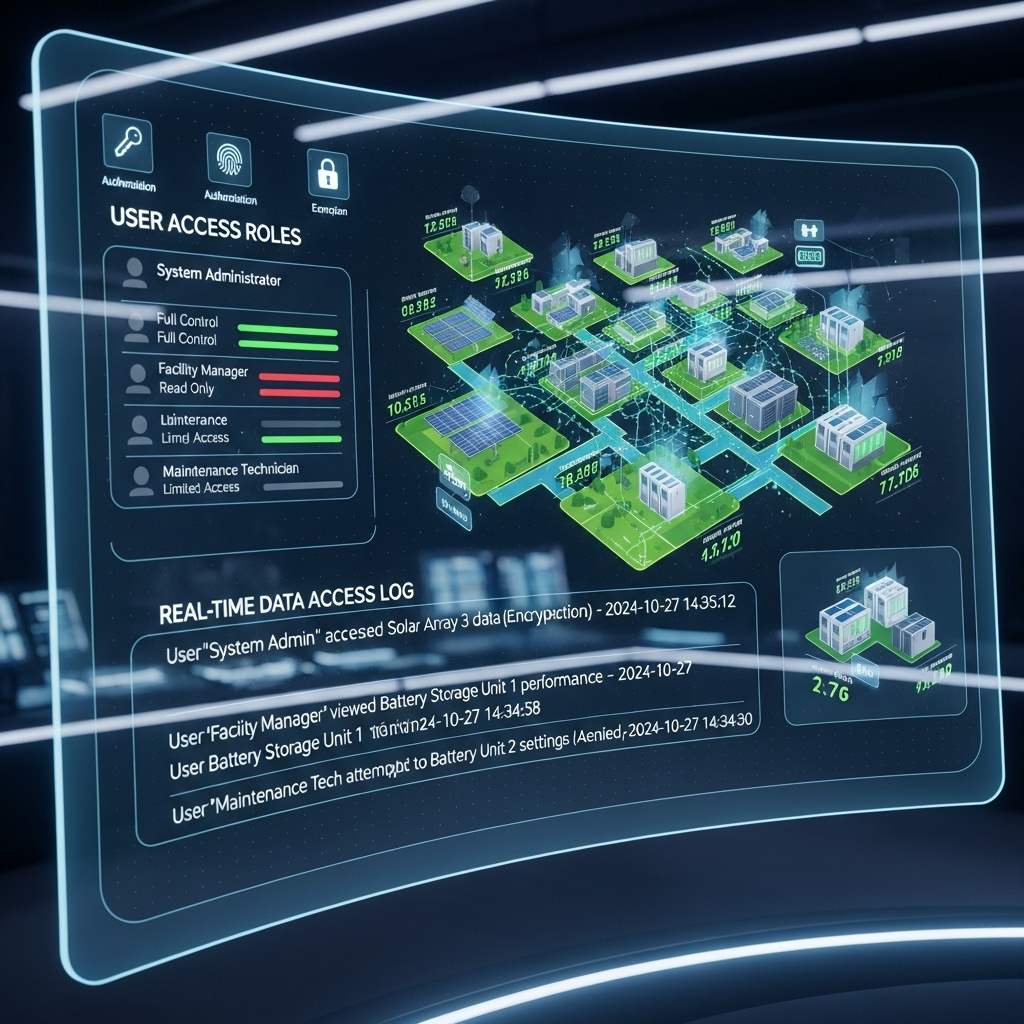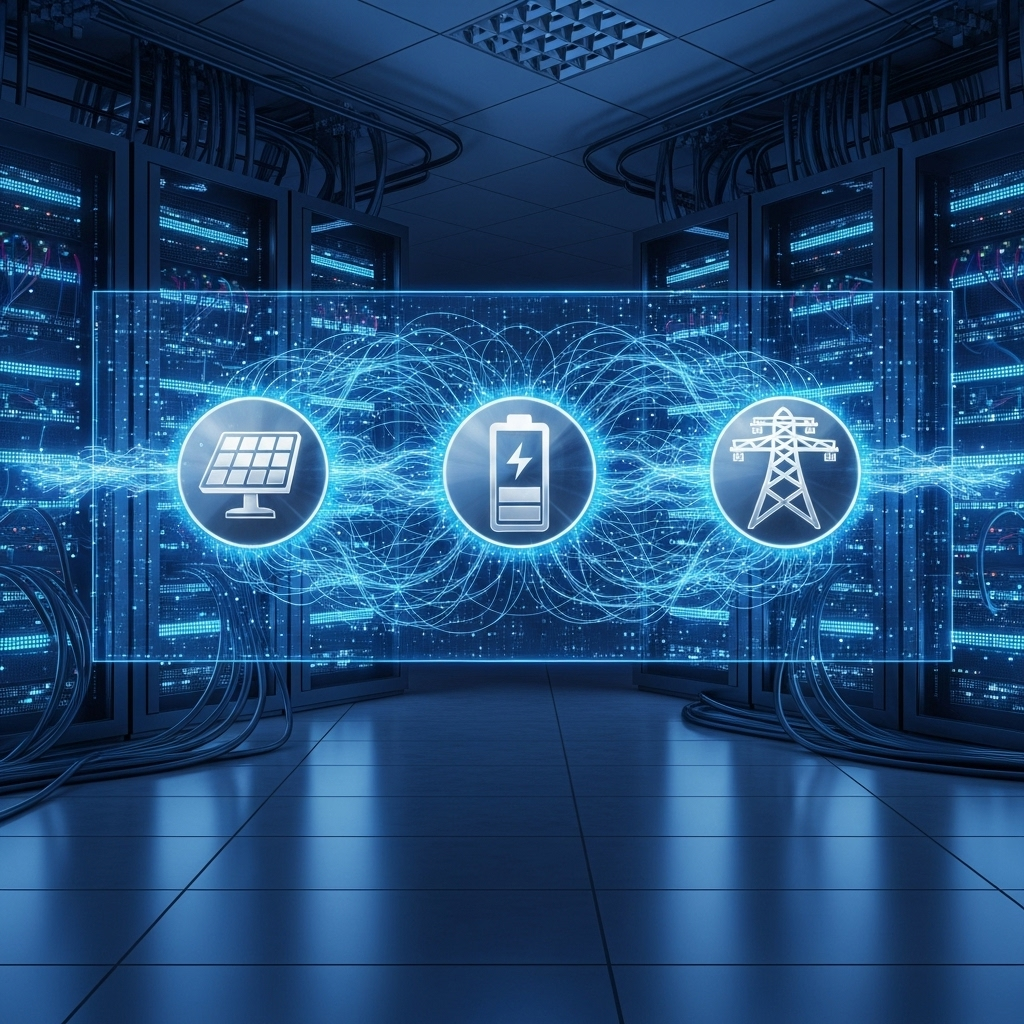The rapid expansion of Distributed Energy Resources (DERs), such as rooftop solar and home battery storage, is reshaping our energy landscape. These assets offer immense potential for a more resilient and flexible grid. However, their integration into energy markets introduces complex challenges related to data access, privacy, and cybersecurity. The solution lies not in collecting more data, but in being smarter with the data we share. Adopting a data minimization approach is crucial for building a secure and scalable DER market where everyone can participate with confidence.
The Core Challenge: Why DER Data Sharing is a Double-Edged Sword
Connecting thousands or even millions of individual energy assets to the grid creates a vast network of data points. While this information is valuable for grid management, it also presents significant risks if not handled correctly.
The Need for Data in Modern Grids
Grid operators and utilities rely on DER data for critical functions. Accurate information on energy generation, consumption, and storage levels helps them forecast demand, maintain grid stability, and prevent outages. For aggregators, this data is the lifeblood of their business. As noted in the IEA's China Power System Transformation report, aggregation allows for the coordination of many smaller DERs, enabling them to participate in balancing, ancillary services, and wholesale markets as a unified Virtual Power Plant (VPP).
The Inherent Risks of Data Exposure
Unfettered access to granular energy data can reveal sensitive information about a household's daily routines, occupancy patterns, and even the types of appliances in use. This raises legitimate privacy concerns for consumers. From a cybersecurity perspective, each data-sharing point is a potential vulnerability. A coordinated attack targeting DERs could destabilize the grid. The development of robust energy management services requires balancing innovation with individual privacy, a challenge that calls for clear policy and regulatory frameworks.
What is Data Minimization? A Practical Approach
Data minimization is not about withholding valuable information; it's about being intentional and purposeful with what is shared. It is a fundamental principle of data privacy that limits the collection and processing of personal data to the minimum necessary to achieve a specific, legitimate purpose.
The Principle of 'Need-to-Know'
The core idea behind data minimization is 'need-to-know'. Instead of collecting a continuous stream of high-resolution data from a home battery system, a grid operator might only need to know its available capacity and how quickly it can respond to a signal. This shifts the focus from raw data to actionable intelligence, protecting privacy without sacrificing operational effectiveness.
Key Techniques for Minimizing Data
Several techniques can be employed to implement data minimization effectively:
- Aggregation: Combining data from numerous DERs to provide a collective overview. This obscures the behavior of any single user while still giving grid operators the information they need about a specific geographic area.
- Anonymization: Removing all personally identifiable information (PII) from datasets before they are shared. This ensures that the data cannot be traced back to an individual household or user.
- Temporal Abstraction: Reducing the frequency of data reporting. Instead of second-by-second updates, data can be shared in 5-minute or 15-minute intervals, which is often sufficient for market participation.
- Purpose-Based Access Control: Implementing systems where different stakeholders are granted access only to the specific data points required for their function. An aggregator might see operational data, while a billing provider only sees net energy consumption.
Enabling Market Participation with Less Data
A common misconception is that minimizing data will hinder a DER's ability to participate in lucrative energy markets. In reality, a smarter approach to data can unlock its full potential securely.
The Role of Aggregators as Data Intermediaries
Aggregators can act as trusted intermediaries. They can establish secure connections with individual DERs to gather detailed operational data. However, when interacting with the broader market, they only present the necessary aggregated information, such as the total flexible capacity of their VPP. This model protects individual customer data while ensuring seamless market integration.
Focusing on Performance Metrics, Not Raw Data
Instead of sharing every operational detail, a DER can simply communicate its performance capabilities. Key metrics like state of charge, available capacity, and ramp rate are often all that is needed for market participation. Another critical metric is Round-Trip Efficiency (RTE), which measures how much energy is returned from a storage system compared to what was put in. As explained in the ultimate reference on solar storage performance, a system with a high RTE is more valuable to the grid. Communicating this performance metric allows the asset's value to be recognized without revealing sensitive underlying data.
Building a Framework for Trust and Security
Long-term success depends on creating a trusted ecosystem where consumers feel secure and market participants have the standardized information they need to operate efficiently.
The Importance of Standards and Regulation
Clear rules and technical standards are essential. According to an innovation brief from IRENA, for Distribution System Operators (DSOs) to securely share customer data, standards for data management and sharing must evolve. These frameworks should protect personal data and empower customers to control how their information is used. Initiatives like centralized data hubs in Europe and voluntary codes of conduct in the US provide models for balancing innovation with privacy.
Empowering Consumers with Data Control
Ultimately, consumers should have the final say over their data. Platforms and services should be designed with user consent at their core. This involves providing clear information about what data is being collected, why it is needed, and who it will be shared with. Giving users the ability to opt-in and manage permissions builds the trust necessary for widespread adoption and participation in DER programs.
A Forward-Looking Perspective
Data minimization is not a restriction; it is a strategic enabler for the future of energy. By focusing on sharing smarter, more targeted information, we can build a DER-integrated grid that is not only efficient and resilient but also private and secure. This approach reduces cybersecurity risks, fosters consumer trust, and paves the way for a truly democratized energy market where everyone can participate safely and effectively.
Frequently Asked Questions
What is data minimization in the context of DER?
It is the practice of limiting the collection, storage, and sharing of data from Distributed Energy Resources (like solar panels and batteries) to only what is strictly necessary for a specific task, such as grid balancing or energy trading.
Will minimizing data limit my system's ability to earn revenue?
Not necessarily. By focusing on sharing key performance metrics and aggregated data, your system can fully participate in energy markets. This approach proves its value without exposing sensitive operational details, ensuring both profitability and privacy.
Who is responsible for implementing data minimization?
It's a shared responsibility. DER manufacturers, software developers, aggregators, and grid operators all play a role. As a system owner, you can contribute by choosing products and services from providers who prioritize data privacy and security.
How does data minimization relate to cybersecurity?
They are directly linked. By reducing the amount of data being transmitted and stored, you shrink the potential attack surface for cyber threats. Less data means less risk of sensitive information being compromised in a breach.





Leave a comment
All comments are moderated before being published.
This site is protected by hCaptcha and the hCaptcha Privacy Policy and Terms of Service apply.